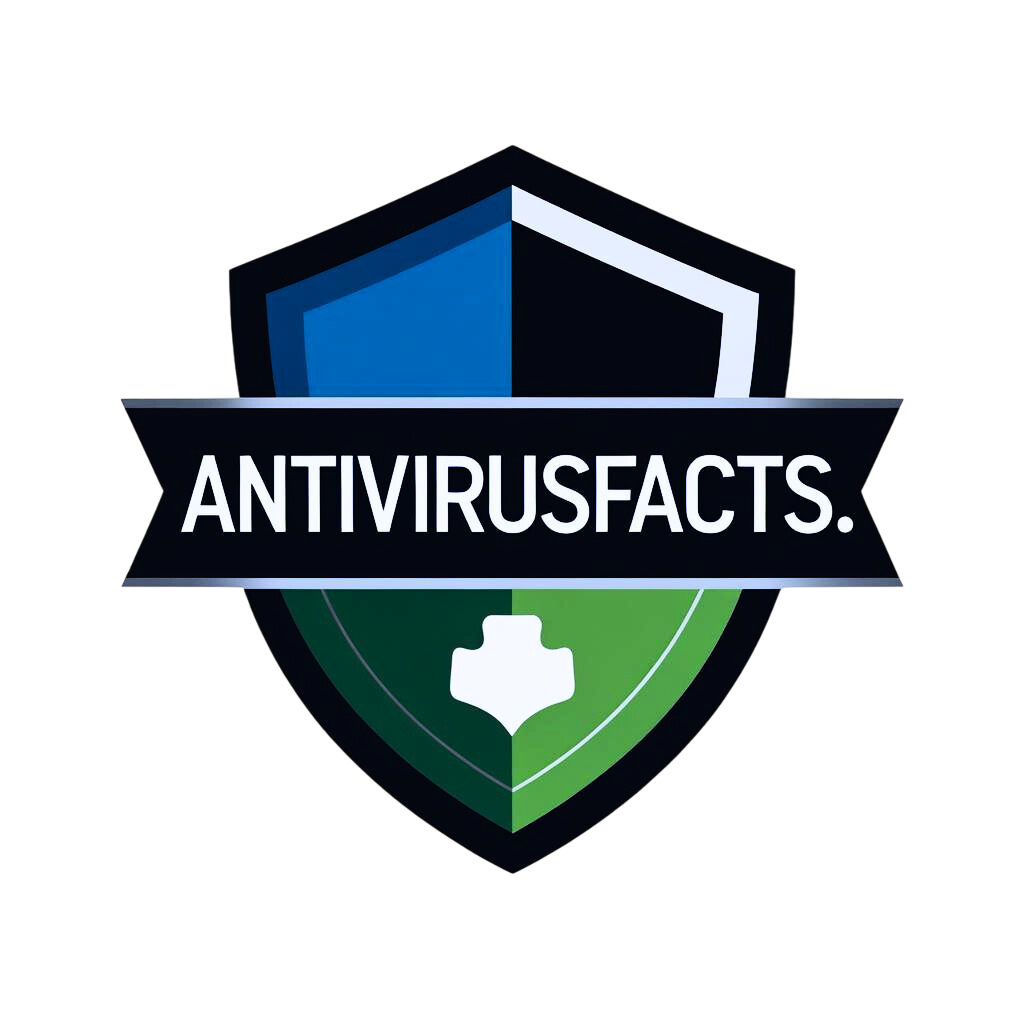Best Antivirus for Low-End PCs 2025 (Lightweight & Effective Options)
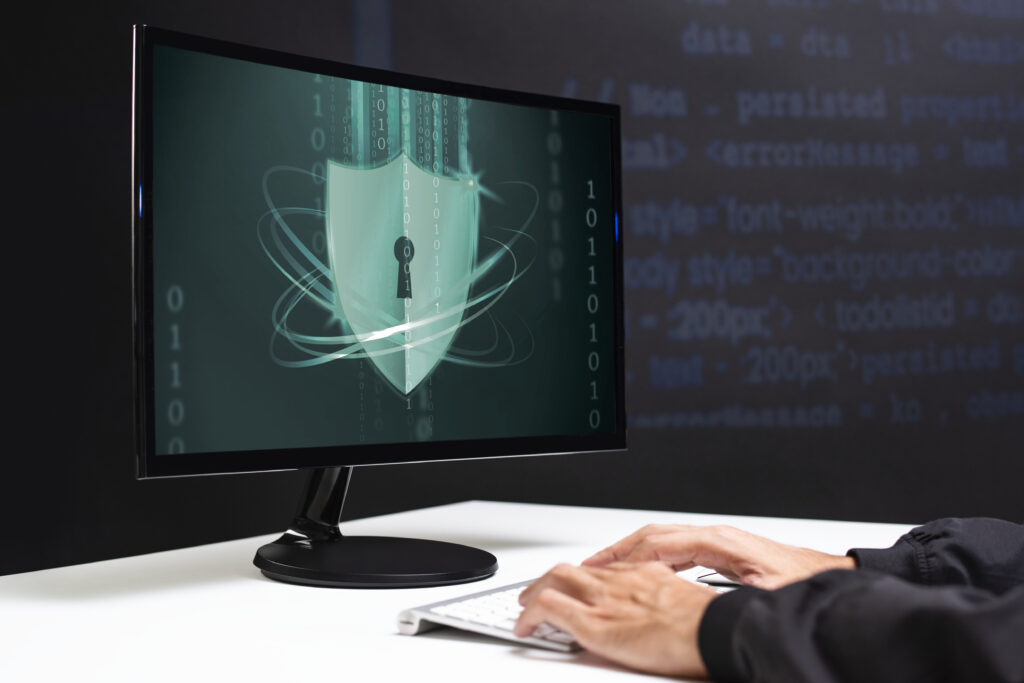
🧠 Introduction: Why Low-End PCs Need Special Antivirus Software
Not everyone has access to the latest gaming laptop or high-performance workstation. In fact, a huge number of users in 2025 are still relying on older, low-end PCs with just 2GB or 4GB of RAM, aging processors, and slow mechanical hard drives. For students, seniors, and everyday users who simply need a computer for browsing, emails, or basic work, upgrading to a new machine isn’t always an option.
Unfortunately, traditional antivirus software isn’t always designed with these kinds of systems in mind. Many security suites come loaded with extra tools and flashy features that look good on paper but slow everything down. You may have noticed your system freezing during scans, booting up slower than usual, or apps taking forever to open. That’s often the antivirus consuming too many resources in the background.
Yet running without protection isn’t safe either. Low-end PCs are often more vulnerable to cyber threats. They may be running outdated operating systems, unsupported browsers, or older drivers — all of which create gaps in your security. Malware, phishing scams, and even ransomware tend to exploit exactly these weaknesses.
That’s why it’s crucial to choose lightweight antivirus software — solutions that are optimized for performance, don’t hog CPU and RAM, and still give you reliable protection. In this guide, we’ve carefully selected the best antivirus for low-end PCs in 2025. Whether you’re using Windows 7, 8, or a sluggish Windows 10 machine, these options are designed to keep you protected without slowing things down.
Let’s take a look at what makes these antiviruses stand out for older hardware and which one could be the right fit for your setup.
🧠 Choosing the Best Antivirus for Low-End PCs in 2025: What Really Matters?
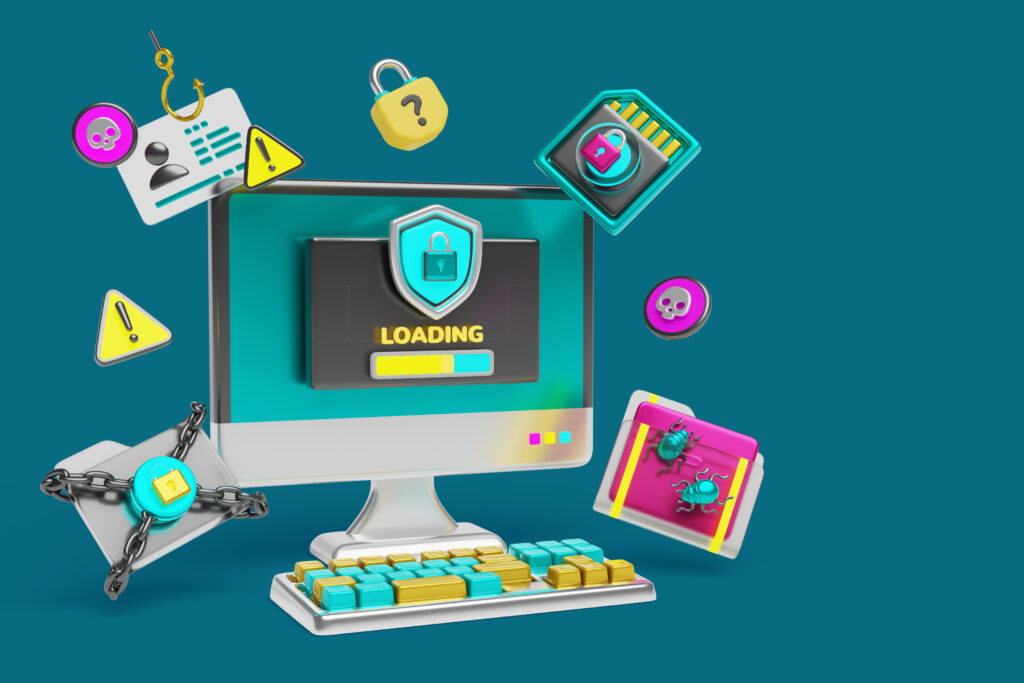
If your computer feels like it’s stuck in 2012, you’re not alone. Millions of people still rely on older or budget-friendly Windows PCs that were never built for heavy-duty software. Maybe you’re using a school laptop with 2GB RAM or a hand-me-down desktop with an old HDD and slow processor. In these setups, installing the wrong antivirus can make your system crawl to a halt.
But skipping antivirus altogether isn’t safe either — especially in 2025, where malware, phishing attacks, and crypto-miners are more sophisticated than ever. In fact, low-end PCs are even more vulnerable because they often run outdated operating systems or don’t receive frequent security patches.
So how do you stay protected without sacrificing speed?
You need a lightweight, fast, and reliable antivirus that won’t overload your CPU or eat up RAM. The good news is: you don’t need to pay a dime for solid protection. We’ve handpicked the best antivirus for low-end PCs in 2025, focusing on tools that offer real-time protection with minimal system impact.
These options are perfect for:
PCs with 2GB–4GB RAM
Windows 7, 8.1, or lightweight Windows 10
HDD-based systems with older CPUs
Users who just want something that works quietly in the background
Whether you’re a student, remote worker, or casual internet user, the following tools will help keep you secure without turning your PC into a lag machine.
Let’s break down the top 5 antivirus options built for low-end computers.
Here’s a quick snapshot for those in a hurry:
| Best For | Top Pick | Why? |
|---|---|---|
| 🖥️ Fastest on very old PCs (2GB RAM) | Panda Dome Free | Lightest RAM usage, cloud-based scanning, modern UI |
| 🔒 Strongest malware protection (free) | Bitdefender Free Edition | Award-winning detection, silent background operation |
| 🧑💻 Easiest to use with great interface | Kaspersky Free Antivirus | Clean UI, great detection, minimal pop-ups |
| 🛠️ Most features in one package | Avira Free Security Suite | Includes VPN, PC cleaner, web protection |
| 🔧 Zero setup, no install needed | Microsoft Defender | Built-in, runs quietly, no extra system load |
🛡️ 1. Bitdefender Antivirus Free Edition (2025)

🚀 Lightweight Protection That Just Works
If you’re using an older PC that already struggles to open a browser with too many tabs, installing a bloated antivirus can make things worse. That’s where Bitdefender Antivirus Free Edition (2025) becomes a lifesaver. It’s designed to stay out of your way while still offering the kind of security you’d expect from a top-tier brand.
Bitdefender’s free version is built for silent, automatic protection. There are no annoying ads, no pressure to upgrade, and no unnecessary extras that slow down your PC. Thanks to cloud-based scanning, most of the virus detection work happens on Bitdefender’s servers instead of your hardware — freeing up RAM and CPU so your system keeps running smoothly.
Whether you’re browsing, downloading files, or just checking email, Bitdefender handles protection quietly in the background. You won’t even notice it — until it blocks a threat.
⚙️ How Bitdefender Performs on Low-End PCs
| Performance Metric | Details |
|---|---|
| RAM Usage (Idle) | ~100 MB |
| CPU Load (Idle) | Extremely low (1–2%) |
| CPU Load (During Scan) | Low, thanks to cloud scanning (~5–10%) |
| Disk Space Required | ~350 MB installation footprint |
| Scan Speed | Fast and efficient, even on older drives |
| Boot Time Impact | Minimal — background processes optimized |
This makes it a perfect match for systems running with:
2GB to 4GB RAM
Mechanical HDDs
Dual-core or older CPUs
Windows 7, 8.1, or lightweight Windows 10
✅ Pros of Bitdefender Free (2025)
| Advantage | Why It Matters |
|---|---|
| Real-time threat detection | Protects you without requiring manual scans |
| Cloud-based scanning | Lightens the load on RAM and CPU |
| No pop-ups or upgrade spam | A distraction-free experience for casual users |
| Award-winning malware engine | Same core tech used in Bitdefender’s paid products |
| Simple user interface | No tech skills required to use or understand |
❌ Cons of Bitdefender Free (2025)
| Limitation | Impact on User |
|---|---|
| No firewall or parental controls | Basic protection only — not for advanced users |
| No scan scheduling or manual scan options | Fully automated — good for simplicity, but lacks control |
| Minimal customization available | Some power users may find it too limited |
🔗 Best For:
If you’re looking for the best antivirus for low-end PCs in 2025 that runs light, fast, and silently, Bitdefender Free Edition is hard to beat. It’s an excellent choice for:
Students using old laptops
Seniors who don’t want to deal with tech stuff
Basic users who browse, email, and stream
Anyone who just wants to “set it and forget it”
This antivirus isn’t flashy. It doesn’t come with bells and whistles. But what it does, it does extremely well — protect your PC without slowing it down.
🔐 2. Kaspersky Free Antivirus (2025)
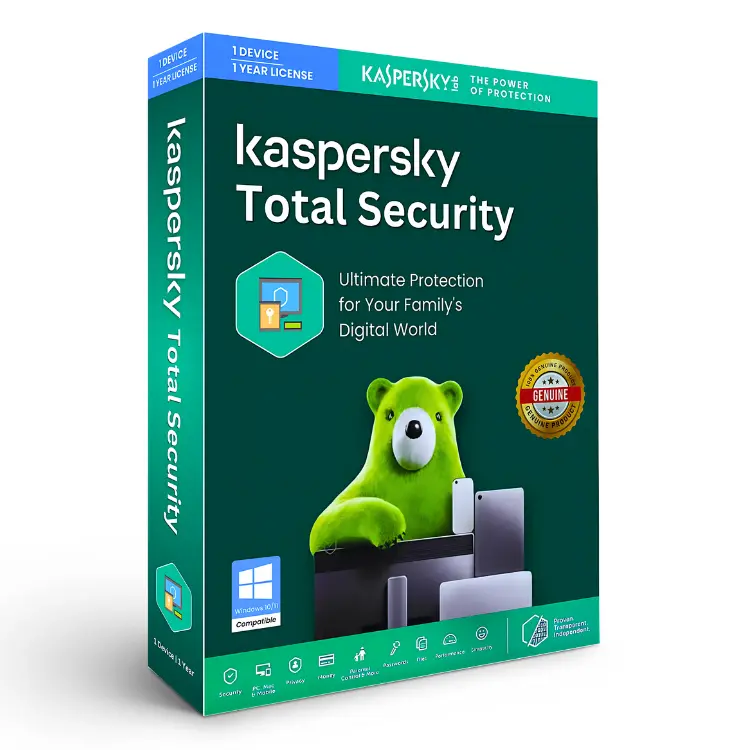
🔒 Proven Security, Made for Simplicity
Kaspersky has been a big name in cybersecurity for decades, and its Free Antivirus version in 2025 continues to deliver high-quality protection — especially for people with slower or aging PCs. Unlike some heavy-duty security suites, Kaspersky Free is streamlined, quiet, and efficient, making it one of the smartest picks for low-end systems.
What makes it stand out is its compatibility with older Windows versions like 7 and 8.1, along with its excellent ability to detect malware and phishing threats without hammering your system’s RAM or CPU. It runs comfortably in the background, and you’ll rarely need to interact with it unless something is flagged.
The interface is clean, modern, and easy to understand — no digging through complicated menus. Kaspersky’s virus definitions are updated regularly and automatically, so you’re always protected without having to lift a finger.
⚙️ How Kaspersky Free Performs on Low-End PCs
| Performance Metric | Details |
|---|---|
| RAM Usage (Idle) | ~120 MB |
| CPU Load (Idle) | Low (1–3%) |
| CPU Load (During Scan) | Moderate (~8–15%) |
| Disk Space Required | ~600 MB |
| Scan Speed | Very good, especially for system and quick scans |
| Boot Time Impact | Slight, but optimized after initial use |
It’s a bit heavier than Bitdefender in terms of memory, but it makes up for it with more responsive controls and slightly better user feedback when something suspicious is detected.
✅ Pros of Kaspersky Free Antivirus (2025)
| Advantage | Why It Matters |
|---|---|
| High detection rates | Excellent performance in real-world malware and ransomware protection |
| Supports older systems | Works well even on Windows 7 and 8.1 |
| Clean, intuitive dashboard | Easy for non-tech-savvy users |
| Low background impact | Doesn’t eat CPU when idle |
| Frequent definition updates | Keeps protection current without manual effort |
❌ Cons of Kaspersky Free Antivirus (2025)
| Limitation | Impact on User |
|---|---|
| Slightly higher RAM usage | May be noticeable on PCs with 2GB RAM during active scans |
| No premium tools like VPN or file shredder | Advanced users may miss added functionality |
| Free tier lacks parental controls and app management | Not ideal for families or shared devices with kids |
🔗 Best For:
Kaspersky Free Antivirus is perfect for users who want premium-level protection without paying a cent — and don’t mind a slightly larger memory footprint in exchange for top-tier security.
It’s especially great for:
Everyday users with 2GB+ RAM
Low-end PCs still running older versions of Windows
People who want something stronger than Microsoft Defender
Users who value clarity, ease of use, and no hidden surprises
If you’re hunting for the best antivirus for low-end PCs in 2025 and want solid peace of mind while browsing, downloading, or shopping online, Kaspersky Free is one of the most trusted names you can get — without the cost.
🐼 3. Panda Dome Free Antivirus (2025)

☁️ Cloud-Powered, Lightweight, and Surprisingly Stylish
Panda Dome Free Antivirus is one of those under-the-radar gems — not as widely known as Bitdefender or Kaspersky, but built with low-end PCs in mind. In 2025, it continues to impress with a cloud-first approach that keeps system resources free while still guarding against the latest threats.
What makes Panda truly stand out is its ultra-light performance. Most of the malware detection happens on Panda’s cloud servers, which means your device isn’t burdened with constant background processing. If you’re using a PC with limited RAM, an older processor, or a traditional hard drive, this cloud-based design makes a noticeable difference.
Visually, Panda also wins points with one of the most modern and clean interfaces of any free antivirus. It’s intuitive, colorful, and doesn’t feel like software from a decade ago — something many low-end PC users appreciate when dealing with outdated hardware.
⚙️ How Panda Dome Free Performs on Low-End PCs
| Performance Metric | Details |
|---|---|
| RAM Usage (Idle) | ~90 MB |
| CPU Load (Idle) | Extremely low (0.5–2%) |
| CPU Load (During Scan) | Low to moderate (~5–10%) |
| Disk Space Required | ~250 MB |
| Scan Speed | Fast, especially when online (cloud dependency) |
| Boot Time Impact | Very minimal |
This makes it a great fit for:
PCs with 2GB RAM or older processors
Systems used primarily for browsing or email
Users with consistent internet access (for full protection)
✅ Pros of Panda Dome Free Antivirus (2025)
| Advantage | Why It Matters |
|---|---|
| Cloud-based scanning | Minimal resource usage — ideal for slower PCs |
| USB protection included | Automatically scans external devices for malware |
| Attractive and beginner-friendly UI | Easy to navigate, even for non-technical users |
| Silent background operation | Doesn’t interfere with daily tasks |
| Frequent updates via cloud | Real-time response to new threats, without large downloads |
❌ Cons of Panda Dome Free Antivirus (2025)
| Limitation | Impact on User |
|---|---|
| Requires internet for full functionality | Offline protection is limited compared to competitors |
| Ad-supported interface | Occasionally displays upgrade suggestions or banner ads |
| No extra tools like VPN, browser protection, or optimizer | Free version is fairly stripped down |
🔗 Best For:
Panda Dome Free is a top pick for users who want modern protection with a super-light footprint. It’s ideal for:
Older PCs with very limited RAM or CPU power
People who stay connected to the internet regularly
Students or basic users who need USB protection for shared devices
Anyone who wants sleek antivirus protection that doesn’t look outdated
If your goal is to find the best antivirus for low-end PCs in 2025 and you value clean design, ease of use, and minimal impact on your system, Panda Dome Free is a smart and stylish choice.
🧊 4. Avira Free Security Suite (2025)
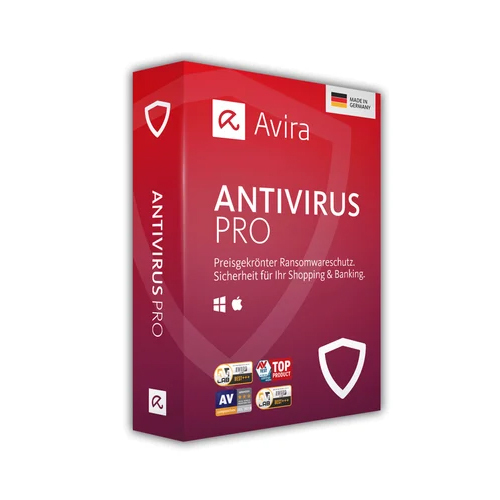
🧰 Packed with Features — Yet Still Low on System Impact
If you’re someone who wants more than just a basic antivirus, Avira Free Security Suite (2025) offers an impressive range of features without overwhelming your older PC. It’s a well-balanced choice for low-end systems, combining lightweight protection with added tools like a VPN, PC cleaner, and safe browsing, all for free.
Avira’s strength lies in its smart modular design. You can choose to use just the antivirus and leave out the extras — or take advantage of its optimization tools if your PC feels sluggish. While it’s a bit heavier than Bitdefender or Panda, the trade-off is more functionality without needing to install five separate programs.
What’s also nice is the clean interface and smart scanning engine, which actively looks for malware, PUPs (potentially unwanted programs), and privacy risks. It’s made for users who want security and system cleanup tools bundled together.
⚙️ How Avira Performs on Low-End PCs
| Performance Metric | Details |
|---|---|
| RAM Usage (Idle) | ~130 MB |
| CPU Load (Idle) | Low (2–4%) |
| CPU Load (During Scan) | Moderate (~10–18%) |
| Disk Space Required | ~600 MB (base suite, not including extra tools) |
| Scan Speed | Moderate (slower if full suite is installed) |
| Boot Time Impact | Slight increase, especially with extras enabled |
It’s a good fit if you have:
At least 3GB–4GB of RAM
An old but stable Windows 10 system
Occasional lag, but still want more than just virus protection
✅ Pros of Avira Free Security Suite (2025)
| Advantage | Why It Matters |
|---|---|
| Includes extra tools (VPN, cleaner, shredder, startup optimizer) | Offers performance tuning and privacy in one place |
| Good real-time detection rates | Keeps you safe from malware, ransomware, and trackers |
| Safe browsing and tracker blocker extensions | Improves privacy while surfing the web |
| Modern, user-friendly interface | Easy to navigate even with added features |
| Modular setup | You can install only what you need |
❌ Cons of Avira Free Security Suite (2025)
| Limitation | Impact on User |
|---|---|
| Tries to install multiple tools during setup | Requires attention during install to avoid bloat |
| Ads and upsell prompts | Free users may see occasional reminders to upgrade |
| Heavier than Bitdefender or Panda on very old systems | May not run well on PCs with just 2GB RAM |
| Limited VPN (500MB/month cap) | Not suitable for heavy browsing or streaming |
🔗 Best For:
Avira Free Security Suite is ideal for users who want more than just basic antivirus protection, without having to pay for a full suite.
It’s best suited for:
Slightly newer low-end PCs (3GB+ RAM)
Users who want free extras like a VPN and privacy protection
People who appreciate having PC cleaning and optimization tools built in
Those okay with the occasional upgrade ad in exchange for more value
If you’re looking for the best antivirus for low-end PCs in 2025 with extra functionality, Avira Free delivers a well-rounded package — as long as your system can handle just a little more weight.
🖥️ 5. Microsoft Defender (Built-In, Windows)
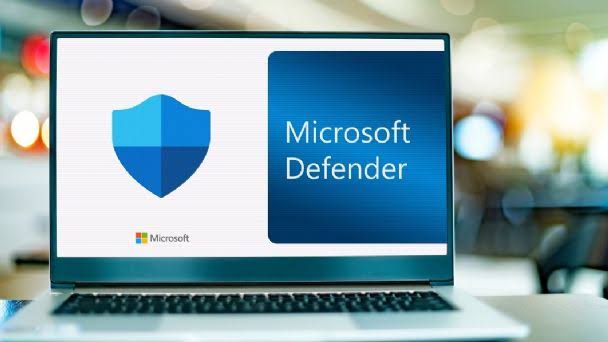
🪟 The Easiest Antivirus You Already Have Installed
Sometimes the best antivirus is the one you didn’t even know was already protecting you. Microsoft Defender, formerly known as Windows Defender, comes built into every Windows PC — and in 2025, it’s better than ever. While it doesn’t offer all the bells and whistles of third-party tools, it provides basic, real-time protection without needing any downloads, sign-ups, or installation steps.
For users with very old or fragile systems, Microsoft Defender can be the safest bet. It’s tightly integrated into Windows, gets updates directly through Windows Update, and runs quietly without requiring any technical setup. There’s no added software to maintain and no learning curve.
While it’s not the most advanced antivirus out there, Defender holds its own against many free competitors — especially for users who want zero hassle and aren’t planning to install third-party programs.
⚙️ How Microsoft Defender Performs on Low-End PCs
| Performance Metric | Details |
|---|---|
| RAM Usage (Idle) | ~100 MB |
| CPU Load (Idle) | Low (1–3%) |
| CPU Load (During Scan) | Moderate (~10–20%) |
| Disk Space Required | Already included in Windows OS (~0MB extra) |
| Scan Speed | Fair, though slower than cloud-based competitors |
| Boot Time Impact | Minimal — built into the Windows boot process |
Great for users who are:
Running Windows 10 or 11
Using a PC with 2GB–4GB RAM
Not wanting to deal with new software installs or configurations
✅ Pros of Microsoft Defender (2025)
| Advantage | Why It Matters |
|---|---|
| Already installed and ready to use | No setup or installation required |
| No ads or upgrade prompts | 100% free with no nagging notifications |
| Automatic updates through Windows | Always current without needing a separate update engine |
| Tight integration with the OS | Runs efficiently and securely as part of Windows |
| Decent real-time protection | Offers good baseline protection for everyday browsing and file transfers |
❌ Cons of Microsoft Defender (2025)
| Limitation | Impact on User |
|---|---|
| Fewer features than other free antivirus tools | No built-in VPN, password manager, or PC cleaner |
| Weaker performance in independent lab tests | Slightly lower detection rates compared to Bitdefender or Kaspersky |
| No extras like browser protection or USB scanning alerts | May miss threats from external drives or risky downloads |
| Basic interface with limited customization | Not ideal for power users or those wanting more control |
🔗 Best For:
Microsoft Defender is a smart choice for:
Beginner users who don’t want to worry about downloading extra antivirus software
PCs that are already slow and can’t handle extra installations
People who only use their computer occasionally for basic browsing and email
Users who trust Microsoft’s security updates and want “just enough” protection
If you’re using a very old system and wondering what’s the best antivirus for low-end PCs in 2025 without slowing anything down or dealing with installs, Microsoft Defender is your most effortless option.
🧾 Full Comparison Table: Best Antivirus for Low-End PCs (2025)
| Antivirus | System Resource Usage | Key Features | Extra Tools (Free) | Best For | Pros | Cons |
|---|---|---|---|---|---|---|
| 🔰 Bitdefender Free Edition | 🔹 RAM: ~100MB 🔹 CPU (Idle): Very Low 🔹 CPU (Scan): ~5–10% | ✅ Real-time protection ✅ Cloud-based scanning ✅ No ads or bloat | ❌ None | Users wanting silent, automatic protection with minimal impact | 🔸 Extremely light 🔸 No pop-ups 🔸 Top-tier malware engine | 🔸 No scan scheduling 🔸 No extras like VPN or firewall |
| 🛡️ Kaspersky Free Antivirus | 🔹 RAM: ~120MB 🔹 CPU (Idle): Low 🔹 CPU (Scan): ~8–15% | ✅ Real-time protection ✅ Optimized for old Windows versions ✅ Great phishing/malware detection | ❌ None | Users on Windows 7/8.1 or budget laptops wanting a clean, secure setup | 🔸 High detection rates 🔸 Intuitive dashboard 🔸 Silent updates | 🔸 Slightly higher RAM use 🔸 No advanced settings |
| 🐼 Panda Dome Free | 🔹 RAM: ~90MB 🔹 CPU (Idle): Very Low 🔹 CPU (Scan): ~5–10% | ✅ Cloud-first antivirus ✅ USB protection ✅ Always-on protection | ❌ None (Free tier only) | Users with weak CPUs who are always online and want a stylish interface | 🔸 Very light 🔸 Simple UI 🔸 Good USB security | 🔸 Requires internet for full protection 🔸 Has ads |
| 🧊 Avira Free Security Suite | 🔹 RAM: ~130MB 🔹 CPU (Idle): Low 🔹 CPU (Scan): ~10–18% | ✅ Real-time protection ✅ Safe browsing ✅ Anti-tracking ✅ File shredder | ✅ VPN (500MB/mo) ✅ Startup optimizer ✅ PC cleaner | Users with 3–4GB RAM wanting more tools in one place | 🔸 Feature-rich 🔸 Safe web browsing 🔸 Privacy tools | 🔸 Ads and upsells 🔸 Slightly heavier 🔸 Slower scans |
| 🖥️ Microsoft Defender (Built-In) | 🔹 RAM: ~100MB 🔹 CPU (Idle): Low 🔹 CPU (Scan): ~10–20% | ✅ Real-time protection ✅ Auto updates via Windows ✅ No-install setup | ❌ None | Users who prefer a “no install” antivirus with just basic protection | 🔸 Built-in and free 🔸 No ads 🔸 Regular updates | 🔸 Basic features only 🔸 Lower malware detection scores 🔸 No extras |
🧠 How to Choose an Antivirus for a Slow PC

Choosing antivirus software for a low-end or older PC isn’t just about protection — it’s about striking the right balance between safety and performance. Install something too heavy, and your PC might slow to a crawl. Go too light, and you risk missing threats.
Here are the key things you should look for when picking the best antivirus for low-end PCs in 2025:
🔍 1. Low RAM and CPU Usage
Your antivirus should use less than 150MB RAM on idle and avoid spikes during scans. Look for cloud-based scanning engines (like Bitdefender or Panda), as they do most of the heavy lifting on external servers.
🧹 2. Minimal Background Activity
Choose antiviruses that work quietly in the background and don’t constantly scan everything in real-time. You want something that only jumps into action when necessary — not software that slows you down 24/7.
🚫 3. No Bloatware or Extra Installations
Avoid free antivirus tools that try to install browser extensions, VPN trials, or toolbars unless you need them. These features often drain system resources and clutter your interface.
🔔 4. Ad-Free or Low-Ad Experience
Many free tools display ads or upgrade prompts. While that’s normal, make sure it’s not too intrusive — especially on low-res screens or slower systems.
⚙️ 5. Compatibility With Your Operating System
If you’re still using Windows 7 or 8.1, make sure the antivirus still supports those versions. Some newer tools have dropped support.
✔️ Bonus Tip: Prioritize Cloud-Based Antivirus
Cloud antivirus uses external servers to scan and analyze threats, meaning less memory and CPU usage on your machine. Bitdefender and Panda are leaders here.
🆓 Do Free Antivirus Programs Really Work in 2025?
If you’re using a low-end PC, free antivirus software might seem like the obvious choice — but is it really enough in today’s threat landscape?
The short answer is: yes, for most people.
💡 What You Get with a Good Free Antivirus
Many free antivirus tools in 2025 offer real-time malware protection, automatic updates, and even phishing and ransomware defenses — all at no cost. Brands like Bitdefender, Kaspersky, and Panda offer free versions built on the same core engine used in their premium products.
Here’s what free antivirus usually covers:
✅ Real-time scanning of files and downloads
✅ Protection against viruses, trojans, and spyware
✅ Automatic definition updates
✅ Basic threat quarantine and removal
For users who stick to general browsing, email, banking, and social media — a free antivirus is typically enough.
🔒 What You Don’t Get (and When to Upgrade)
However, free antivirus tools do have limitations. You may want to consider upgrading to a paid version if you need:
| Missing from Free Tools | Why It Matters |
|---|---|
| 🔐 Firewall or network attack protection | Protects you from hackers and unknown devices on your Wi-Fi |
| 📱 Multi-device coverage | Protects your phone, tablet, and laptop in one subscription |
| 🕵️♂️ Identity or webcam protection | Stops online spying and identity theft |
| 🌍 Unlimited VPN usage | Needed if you browse on public Wi-Fi or want full privacy |
| 🧽 System speed-up tools | Clean junk files, disable bloatware, and optimize boot time |
| 📞 Premium customer support | Helpful if you’re not tech-savvy or face complex threats |
✅ So, Are Free Antivirus Tools Worth It?
Yes — especially if you’re on a tight budget or using a low-end PC that can’t handle heavy suites. They offer solid protection against everyday threats.
But if you’re handling sensitive data, frequently shopping online, or want all-in-one security and performance, a lightweight paid antivirus might be worth the small cost.
⚡ How to Speed Up Your Low-End PC Without Upgrading Hardware

Running a slow PC in 2025 doesn’t mean you need to throw it out or spend money upgrading parts. With a few smart tweaks — and the right antivirus — you can squeeze out much better performance even from older machines.
Here’s how to give your low-end PC a second wind:
🧹 1. Disable Startup Programs
Too many programs starting with Windows can slow down boot times dramatically.
🔍 Press
Ctrl + Shift + Escto open Task ManagerGo to the Startup tab
Disable anything you don’t need (like Skype, OneDrive, etc.)
Your PC will start faster with less background noise.
🌐 2. Use a Lightweight Web Browser
Heavy browsers like Chrome can eat up RAM fast. Try:
Microsoft Edge (in performance mode)
Brave Browser — privacy-focused and light
Opera — good for older systems with low memory
Pairing one of these with a light antivirus ensures you don’t run out of resources while browsing.
🗑️ 3. Remove Junk Files and Temporary Data
Over time, your PC collects tons of temporary files and useless data.
Use tools like Avira’s PC Cleaner, CCleaner, or Windows’ built-in Disk Cleanup
Clear browser cache regularly
Uninstall software you don’t use anymore
🔕 4. Turn Off Unnecessary Animations
Windows looks nicer with animations, but they cost speed.
Go to Control Panel → System → Advanced System Settings
Under Performance, click “Settings”
Choose “Adjust for best performance”
This disables effects and makes your system feel snappier.
🦠 5. Pick a Lightweight Antivirus
The most important step is choosing an antivirus that doesn’t eat up RAM or CPU. Every product in our list is optimized for low-end PCs — especially Bitdefender Free, Panda Dome, and Microsoft Defender.
Avoid antivirus software that installs extra tools or forces background optimizers unless you truly need them.
✅ Bonus Tip: Clean Up Once a Month
Just like you clean your room, clean your PC:
Clear caches
Remove unused apps
Reboot your PC
Run a quick virus scan
These small habits keep your system stable and responsive — no hardware upgrade needed.
❗ Can I Use More Than One Antivirus on a Low-End PC?
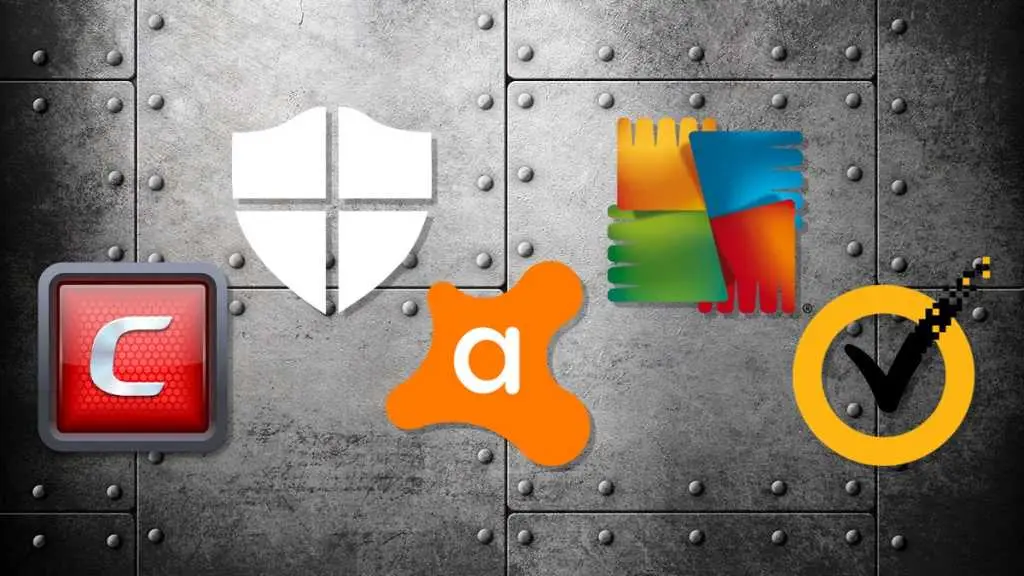
This is one of the most common questions people ask — especially when they want to double their protection. But on a low-end PC, the answer is simple:
No — you should not run more than one real-time antivirus at the same time.
Here’s why:
⚠️ Why Running Two Antivirus Programs Is a Bad Idea
| Problem | What Happens |
|---|---|
| System Slowdown | Both programs fight for CPU and RAM, making your PC painfully slow |
| Conflicts and Crashes | They may block each other’s actions or flag each other as threats |
| Unstable Scans | Real-time scanners overlap, leading to false positives or missed viruses |
| Longer Boot Times | Your PC has to load two heavy apps at startup — unnecessary strain |
This is especially harmful if you’re using a system with:
2GB–4GB RAM
An old CPU (Intel Core 2 Duo, Pentium, etc.)
A mechanical hard drive (HDD)
✅ What You Can Do Safely
You can safely combine one real-time antivirus with an on-demand anti-malware scanner. This gives you added protection without the risk of conflict.
Here’s a safe combo strategy:
| Real-Time Antivirus (Active) | On-Demand Tool (Passive) |
|---|---|
| Bitdefender Free, Kaspersky, Panda, etc. | Malwarebytes Free, Emsisoft Emergency Kit |
Your antivirus runs in the background 24/7
The malware scanner runs only when you manually start it
This setup is great for users who want strong backup scanning without installing a full second antivirus.
🧠 Takeaway
If you’re using a low-end PC, one solid antivirus is enough — especially if you choose any of the options we’ve listed. Add a passive scanner once a month for peace of mind, and you’ll stay protected without wrecking your performance.
🙋 Frequently Asked Questions (FAQ)

1. What is the best antivirus for low-end PCs in 2025?
The best antivirus depends on your specific needs:
If you want the lightest on resources, go with Panda Dome Free
If you want strong malware protection, choose Bitdefender Free
If you want a mix of security and tools, Avira Free is a solid bet
👉 See the quick table below for a snapshot:
| Best For | Recommended Antivirus |
|---|---|
| Lightest RAM/CPU usage | Panda Dome Free |
| Best malware protection | Bitdefender Free Edition |
| Most features | Avira Free Security Suite |
| Built-in/no setup | Microsoft Defender |
| Windows 7/8 support | Kaspersky Free Antivirus |
2. Can I run antivirus on a PC with just 2GB of RAM?
Yes, but only if the antivirus is lightweight. Bitdefender Free, Panda Dome Free, or Microsoft Defender are great choices. Avoid full security suites that include firewalls, VPNs, and optimizers — they can slow your system drastically.
3. Does antivirus slow down old computers?
Some do. Heavier antivirus suites with constant scanning and background tasks can consume a lot of RAM and CPU, making your PC sluggish. Look for:
Cloud-based scanning (like Panda or Bitdefender)
Low idle usage (<150MB RAM)
No auto-installed toolbars or extensions
4. Should I remove Microsoft Defender if I install another antivirus?
No. Microsoft Defender automatically disables itself when you install a third-party antivirus with real-time protection. It stays in the background as a passive fallback.
5. Is free antivirus enough in 2025?
Yes — for most users. Free versions from reputable brands offer excellent real-time protection and automatic updates. However, if you need extras like VPN, webcam protection, or identity monitoring, you may want to consider a paid version.
6. Which antivirus works best without an internet connection?
Most free antivirus tools rely on cloud scanning, but some still offer offline protection:
| Antivirus | Offline Protection? |
|---|---|
| Bitdefender Free | ✅ Good |
| Kaspersky Free | ✅ Very Good |
| Panda Dome Free | ❌ Weak (cloud-dependent) |
| Avira Free | ✅ Moderate |
| Microsoft Defender | ✅ Decent |
For offline PCs, Kaspersky Free or Microsoft Defender are the most reliable options.
7. Can I use antivirus on a Windows 7 PC in 2025?
Yes, but with caution. Microsoft has ended support for Windows 7, so it’s more vulnerable. Use lightweight antivirus tools that still support it:
✅ Kaspersky Free (supports Win 7)
✅ Panda Dome Free
✅ Avira Free (may drop support soon)
❌ Bitdefender Free (limited Win 7 support in some versions)
8. Which antivirus has the least ads and popups?
Bitdefender Free: No ads, no nags — completely silent
Microsoft Defender: No ads, built-in
Panda Dome Free: Some upgrade suggestions
Avira Free: Has ads and upsells
Kaspersky Free: Minimal, but some branding
So, if you want peace and quiet, go with Bitdefender Free or Microsoft Defender.
9. How often should I scan my PC with antivirus?
For low-end PCs, don’t overdo it. Here’s a safe scanning routine:
| Scan Type | Recommended Frequency |
|---|---|
| Quick Scan | Every 2–3 days |
| Full Scan | Once a week |
| USB Device Scan | Every time you plug in a new device |
| On-Demand Malware Scan | Once a month (with Malwarebytes or similar) |
This balances safety with performance.
10. Can I use antivirus and Malwarebytes together?
Yes — as long as only one runs in real-time. Use your antivirus for constant protection and keep Malwarebytes Free as an on-demand scanner to catch things your main antivirus might miss.
For example:
Use Bitdefender Free or Kaspersky Free as your main antivirus
Run Malwarebytes Free manually once a week or when you suspect a threat
🏁 Final Verdict: What’s the Best Antivirus for Low-End PCs in 2025?
Not all antivirus programs are built the same — especially when it comes to older or budget-friendly PCs. The best antivirus for low-end PCs in 2025 is one that protects without slowing you down.
If you’re looking for something lightweight and effective:
Choose Bitdefender Free Edition if you want silent, top-tier protection with almost zero system load.
Go with Panda Dome Free if you need the lightest antivirus possible and are always connected to the internet.
Pick Avira Free Security Suite if your PC can handle a bit more and you want extra tools like a VPN and PC cleaner.
And if you don’t want to install anything, Microsoft Defender is already doing a solid job right out of the box.
👉 Whether you’re a student, remote worker, or casual user, there’s a free antivirus that suits your aging device — and keeps you safe online without sacrificing speed.
Explore More from AntivirusFacts.com
🔒 Is Windows Defender Enough in 2025? Security Experts Weigh In
Learn whether Microsoft’s built-in antivirus is good enough for basic protection in 2025.🧹 How to Remove Virus from PC Manually (2025)
Step-by-step guide for removing stubborn viruses without paid software.⚔️ Bitdefender vs Kaspersky 2025: Head-to-Head Antivirus Review
A full comparison between two of the most powerful free and premium antivirus options.🆓 Avast vs AVG 2025: Which Free Antivirus Is Better?
A detailed breakdown of two popular free antivirus tools for low-end and mid-range PCs.💸 McAfee vs Avast 2025: Best Value for Your Money?
Compare two feature-rich antivirus suites — see which gives you better protection per rupee.☎️ McAfee Customer Support: How to Avoid Scams and Contact Real Help in 2025
Avoid fake tech support numbers and find real help for your McAfee product.🛡️ Norton vs McAfee 2025 – Which Antivirus Offers Better Protection?
A security-focused comparison of two premium antivirus leaders.🌍 Useful External Resources
Use these to support your facts and offer credible information:
🔗 AV-TEST: Independent Antivirus Performance Scores (2025)
For readers who want to see lab results for malware detection and system impact.🔗 Panda Free Antivirus – Official Site
Direct link to the lightweight antivirus that shines on older machines.🔗 Bitdefender Free Edition – Product Page
For those ready to download Bitdefender.🔗 Microsoft Defender Overview – Microsoft Support
Explains what Defender does and how to use it.
